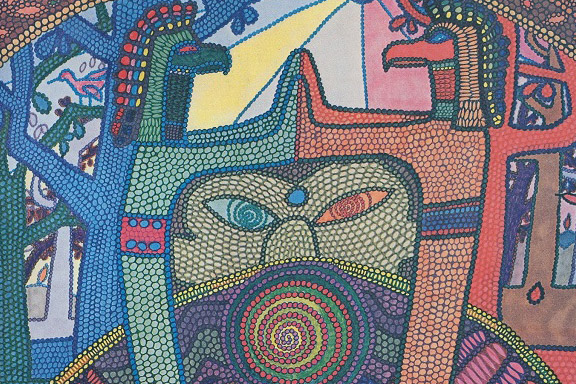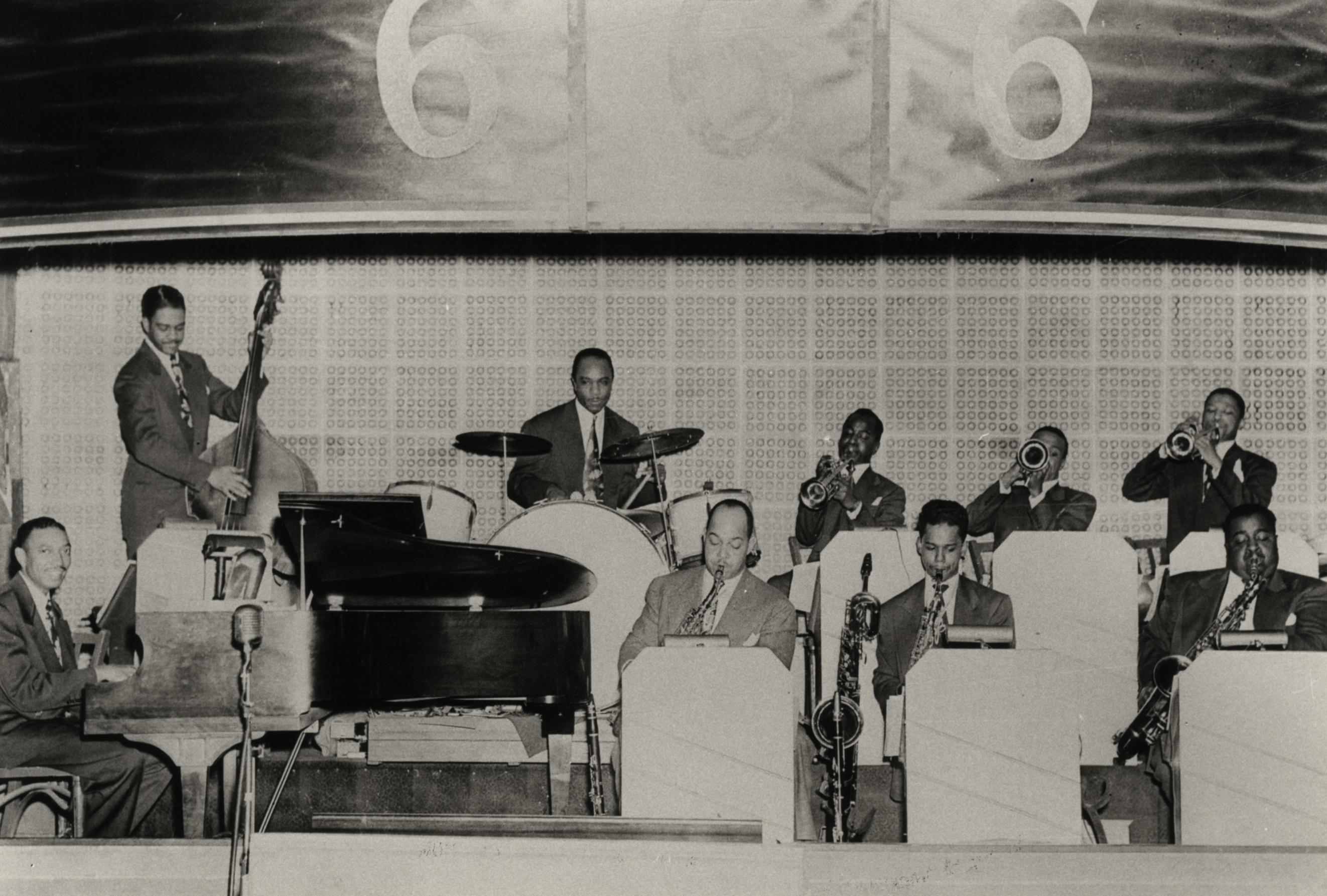Harlem of the North: Montréal, Little Burgundy Jazz and the Rise of Black Musicianship
Andy Williams explains how Montréal became one of the most fertile jazz scenes in the world in the early 20th century
Of all the mass migrations to Montréal over the centuries, few were more significant – and less heralded – than the city’s settlements of black workers from Nova Scotia, the Caribbean and the United States. Throughout the 19th and 20th centuries, these transplants brought with them a torrential wave of talent that would change the musical output of the city forever. As a result, for a time between the two world wars, Montréal became known as the “Harlem of the North.”
For many decades, Montréal’s black population clustered around the southwest neighborhood of Little Burgundy, sandwiched directly between the heart of downtown and the Lachine Canal, where the region’s thriving railroads, docks and industrial sectors first provided many of the community’s jobs. Montréal after the First World War was still a decidedly segregated city, and few geographical lines in the city defined that racial division more than the border between the rich, white uptown district north of Dorchester Boulevard (today’s René Levesque Boulevard), and the black enclave down the hill in Little Burgundy.
Musicians would play regular jobs from 9 PM to one or two in the morning, and then search out the jazz clubs that used to stay open.
Though black musicians could play at the white clubs uptown, storied venues such as The Stork and El Morocco wouldn’t allow blacks in as customers. It was almost unheard of to have black and white musicians performing, dancing and drinking together freely in the uptown clubs and dance halls of the time. As a result, after World War I many venues catering to the black community blossomed along Saint Antoine Street, the northern border of Little Burgundy. There, black musicians could perform into the early hours of the morning.
The more freewheeling late-night nature of Little Burgundy’s Saint Antoine strip, combined with its proximity to the uptown clubs, created an entirely different kind of atmosphere for the music that evolved within these clubs. Whereas the big bands uptown catered to glitz and radio broadcasts, the Saint Antoine strip downtown developed a jazzier swing community out of smaller casts of musicians that could improvise at length, within venues than were not beholden to the same race or licensing standards as their Golden Square Mile counterparts.
Musicians were abundant in Little Burgundy, creating a healthy community of talented sidemen and backing bands that were ready to support any headlining act passing through town. “Naturally we had to go where the work was,” says Little Burgundy-reared pianist Oliver Jones of the era. “Musicians would play regular jobs from 9 PM to one or two in the morning, and then search out the jazz clubs that used to stay open.” The music and late hours also attracted white audiences looking for livelier parties, as well as white musicians looking to put their talent to the test. It wasn’t long before Saint Antoine clubs such as Café St-Michel and Rockhead’s Paradise became legendary for their showmanship. “It was a wonderful schoolroom for young musicians to learn,” says Jones.
The Church Ladies Behind the Headliners
Little Burgundy’s Saint Antoine clubs served as the ideal classroom for local musicians to experiment with swing music to push the limits of jazz improvisation, but the seeds of those musical capabilities were first instilled into the community’s young people a few blocks south, through groups associated with the neighborhood’s black churches. The Union United Church of Montréal, formed in 1907, came together when the neighborhood’s railway porters and their families felt they needed a place where they could worship more freely.
By the First World War, the congregation had become part of the community’s fabric through Christian-based self-empowerment associations, such as the Women’s Coloured Club Of Montréal, the Universal Negro Improvement Association and the Negro Community Centre. At the core of these associations was a network of black women who made a point of nurturing the community’s musical talents from a very young age.
Literally thousands of children over the decades passed under the guidance of such ladies. The most famous of these women was Oscar Peterson’s sister, Daisy Sweeney, who for over 40 years taught many upcoming jazz pianists how to master their craft. Her brother Peterson was among her most notable students, as were Oliver Jones and Joe Sealy.
The tireless work of women allowed younger generations to develop their musical abilities despite the poverty that surrounded them.
Sweeney’s work with Little Burgundy’s most talented youngsters often extended well beyond the music lessons she gave for 25 cents, a fee that was regularly waived for those who couldn’t afford it. According to her Negro Community Centre colleague Emily Clyke in a 1987 interview for the Montréal Gazette, Sweeney “would get someone to loan them a piano, or she’d persuade a service club to donate a piano to the center and then she’d have it installed in their home. When times were tough, she’d even see that they had clothing to wear. She was a tremendous influence on people in the community, but it was always behind the scenes.”
The tireless work of women such as Daisy Sweeney kept a professional order and etiquette in the neighborhood, allowing younger generations to develop their musical abilities despite the poverty that surrounded them. As a result of that work, throughout and after the war many spiritual singers from Little Burgundy’s churches were able to gain employment in the uptown clubs, and increasingly in the travelling theatre attractions that were staged by Americans and British road-show companies. In this and later cases, Montréal’s geographic position between the United States and Europe played a large role in helping put Little Burgundy’s talent pool on the international map.
The World Beyond Saint Antoine Street
If Montréal’s uptown/downtown dynamic had already gained a healthy reputation among the city’s nightlife crowd during World War I, the Prohibition years south of the border set that reputation into overdrive. From the mayor’s office on down, Montréal’s plan to profit from America’s dry years was to actively promote the city as a sinner’s paradise, and Saint Antoine clubs became legendary in large part due to their lax rules.
From 1920 to 1933, visitors from across the continent flocked to the city for its drinking, dancing, gambling, prostitution, all-night establishments and, of course, the jazz. As Oliver Jones recalls, “There was the Café St. Michel, the Black Bottom, Rockhead’s Paradise and the Latin Quarters. The jazz hotspots were in Little Burgundy, and everyone wanted to be showcased in the so-called hood. It was known as the place to go club-hopping at de la Montagne and Saint Antoine.”
Little Burgundy’s circuit of clubs was all within a block of each other, brimming with talents on their way to becoming internationally known. Top jazz clubs Café St. Michel and Rockhead’s Paradise promoted different lineups nightly, while the Terminal Club became popular for their dancers and a memorable performance by Billie Holiday. Many white musicians, politicians and celebrities came to listen to the wonderful music played by some tremendous black musicians.
Radio played a large part in getting Little Burgundy’s musicians heard as well. Canada’s first commercial radio station, XWA (later known as CFCF), began broadcasting regularly from Montréal’s nightclubs in the ’20s. Players such as Oscar Peterson, Milt Sealy and the Sealy family, Maynard Ferguson, Steep Wade, Allan Wellman, Ralph Metcalf and many others shared the limelight.
Of the few Little Burgundy jazz musicians who went on to sustain recording careers, none met with greater success than Oscar Peterson, the son of a railway porter, who released 200 recordings over 60 years. One of the most beloved musicians Canada would produce in the 20th century, Peterson was a regular on the Montréal club and ballroom circuit of the ’40s, where his talents were discovered one day as part of a Canadian Radio broadcast while Verve label owner Norman Granz was being driven to the Montréal airport. By 1949, the pianist was performing at Carnegie Hall, Jazz at the Philharmonic and many other great jazz venues worldwide.
End of an Era
The golden age of Little Burgundy’s jazz scene began to wane after the Second World War. The post-war period meant a new wave of European settlers arrived in Montréal, among them a generation of displaced Jews who brought with them an appreciation for the more avant-garde ends of jazz. The very nature of jazz was changing from crowd-friendly swing to more complex bebop structures, and the swelling post-war university population preferred this more listener-intensive form of the genre.
“When bebop music came in around the middle or late ’50s it changed. It actually became very, very complex for a lot of black people,” says Jones. “I remember them coming off the dance floor and saying, ‘Oh, this is not what we’re used to.’ It wasn’t only here in Canada. It happened in the States, and then a much wider audience, white listeners and white musicians, came on the scene and people started to listen to it in a different light. The syncopation was not the same. You didn’t have that big band feeling but it created another audience.”
The political environment changed, too. By the late ’50s, the nightlife scene had become visibly mired in mob connections, violence and corruption. A new mayor, Jean Drapeau, was voted into office on a platform of cleaning up the city, and his vision involved nothing less than a complete transformation of the downtown core. From Drapeau’s perspective, the uptown/downtown dynamic, Little Burgundy clubs and the mingling between the white and black communities was central to the problem.
The solution he concocted was drastic: The city began planning the construction of the Ville-Marie Expressway, which would run east/west right through the heart of Montréal. The raised thoroughfare would follow Saint Antoine Street at the northern borders of Saint-Henri and Little Burgundy, cutting off almost all contact between those working-class neighborhoods and their more affluent clientele to the north.
At the same time, Montréalers were changing. Rail travel was in decline as the post-war generation purchased cars en masse and began to move off-island. With the advent of television, nightlife dropped drastically, with audiences turning to the passive pleasures of home entertainment. Little Burgundy was also hit hard by the opening of the St-Lawrence Seaway in the mid-’50s. In the mid-’60s, the city of Montréal launched a large urban renewal project in Little Burgundy, demolishing countless condemned dwellings and replacing them with social housing developments while revitalizing other parts of the neighborhood. The closure of the Lachine Canal in 1970 cleared away all the jobs associated with the neighborhood’s economic engine, and by then, the Ville-Marie Expressway construction was underway and those parts of Little Burgundy that were north of Saint-Antoine were finally demolished.
As the years wore on and people got used to the presence of the expressway, Montréal’s old uptown transformed into the new downtown, and everything down the hill and past the highway was effectively forgotten. Little Burgundy’s once-thriving jazz scene disappeared without a last trumpet call. It would take until the 1990s before cultural historians began rediscovering this community that had once catapulted a generation of black Montréalers to the forefront of the international jazz scene.

